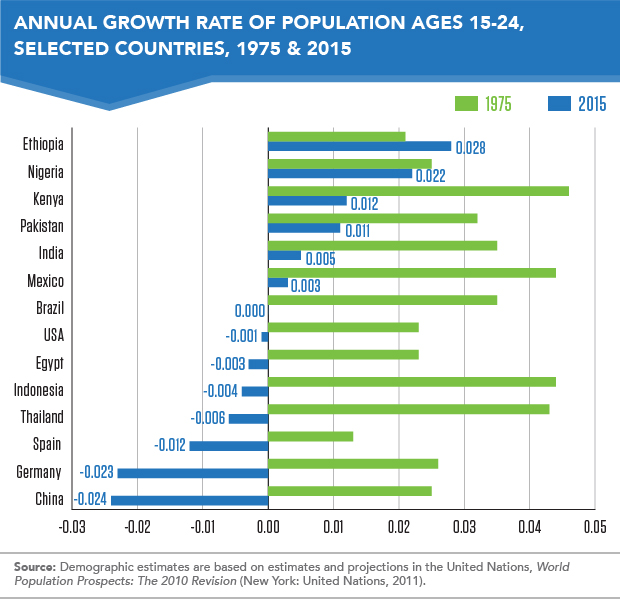
'Youth Unemployment in Sub-Saharan Africa', Interview With David Lam
(August 2014) Policymakers in many low-income countries seek to reduce economic inequality and poverty and improve lives through increased economic growth. Many economists and demographers point to the demographic dividend as a way for these countries to achieve accelerated economic growth. The demographic dividend begins with an economic window of opportunity that opens as a result of a rapid decline in fertility, and an increase in the proportion of working-age people relative to dependent children. The path to a demographic dividend includes an increased proportion of youth in the overall population, referred to as the youth bulge.
In a recent interview, David Lam discussed the findings of his research on the interaction between economics and the demography of the youth bulge in sub-Saharan Africa. Lam, an economics professor at the University of Michigan, highlights a key finding of the study: when youth populations grow faster, youth unemployment tends to increase.
He notes that many countries have benefited from a decline in youth population growth, though both fertility and youth population growth remain high throughout most of sub-Saharan Africa. The figure shows the annual growth rate of the youth population in 1975 and 2015 for a set of high-, middle-, and low-income countries, and exhibits the continued high growth rates in several countries in sub-Saharan Africa.

As countries in sub-Saharan Africa continue to experience high levels of growth in their youth populations, policymakers must take steps to maintain current levels of youth employment and ensure that youth are integrated into the economy. Lam highlights findings, challenges, and implications for policymakers in this snapshot.
For a policy brief on this work: http://wol.iza.org/articles/youth-bulges-and-youth-unemployment.pdf
For the full paper: http://paa2014.princeton.edu/papers/141328
